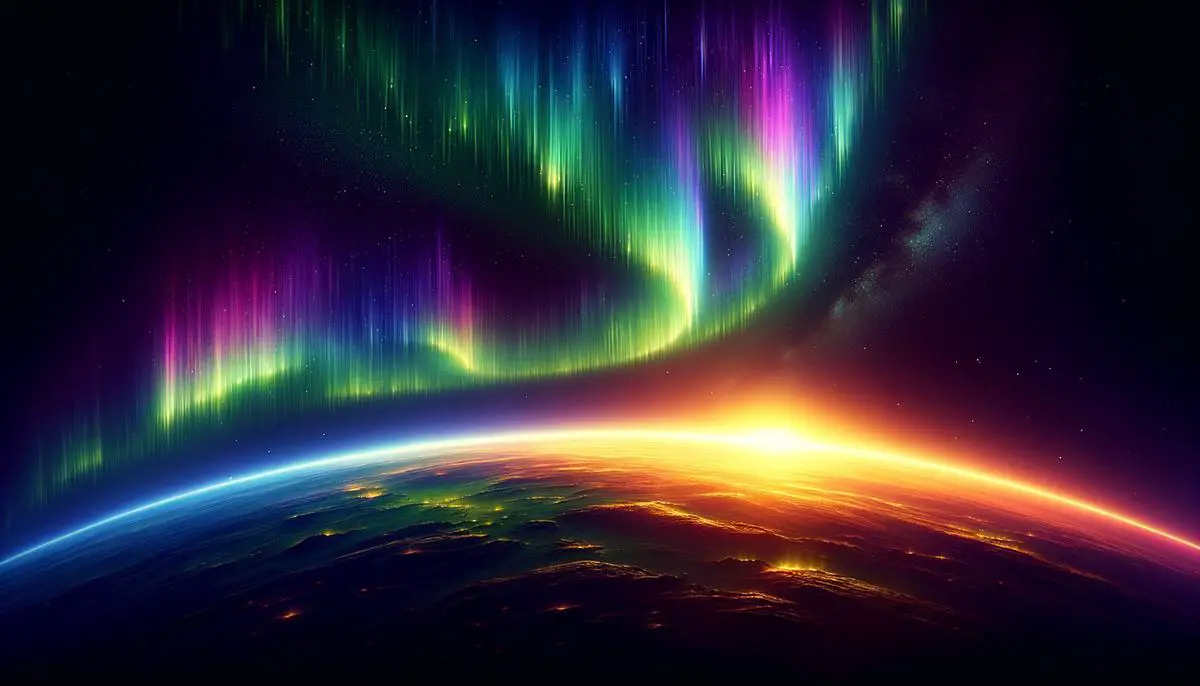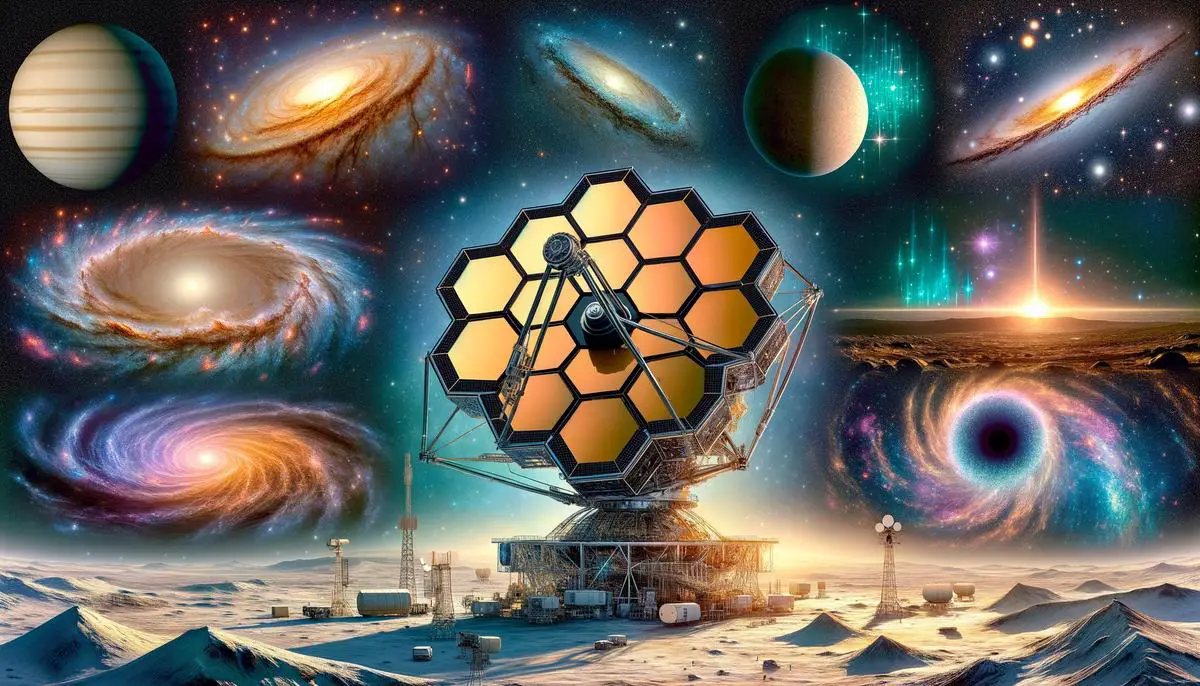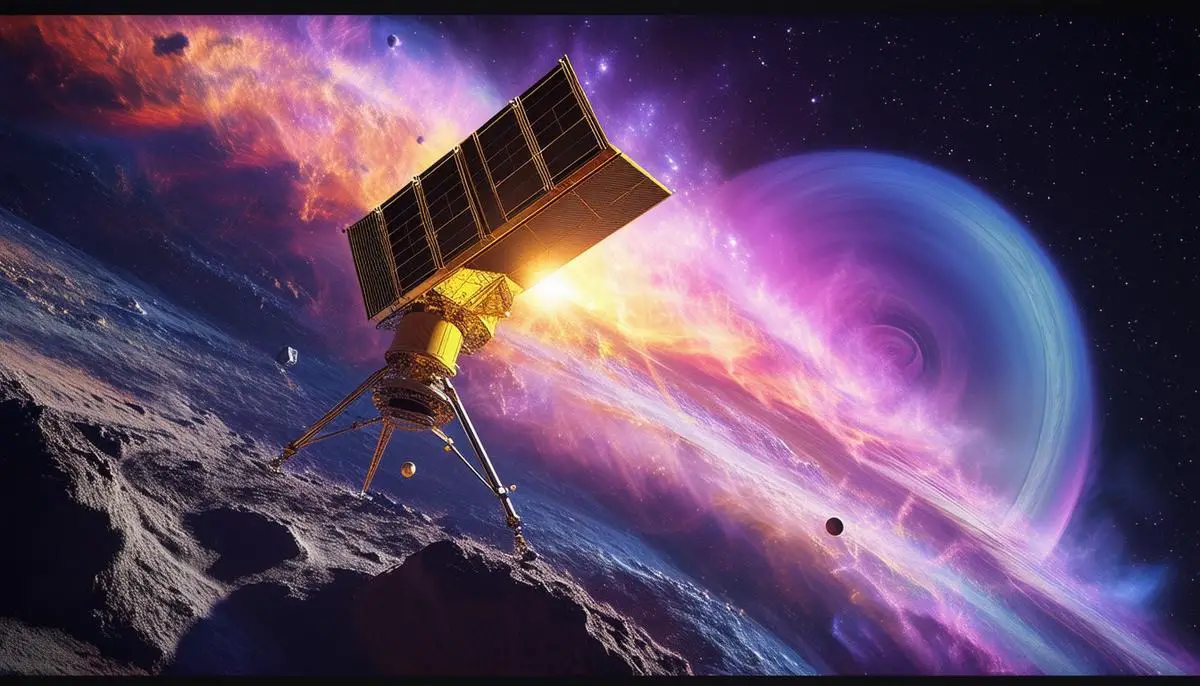Investigation Process and Findings of JWST
The James Webb Space Telescope (JWST) began observing distant exoplanets, revealing intricate details that sparked intense speculation about extraterrestrial life. Notable among these was Proxima Centauri b, just 4.24 light-years from Earth, exhibiting intriguing characteristics. Initial observations from JWST detected bright red lights, initially thought to be city lights akin to those seen on Earth.
Utilizing its Near-Infrared Camera (NIRCam) instrument, JWST captured high-resolution images and spectra crucial for analyzing these exoplanetary features. This instrument observes at infrared wavelengths, allowing scientists to peer through dust clouds and detect heat emissions, which contributed to this exciting discovery.
To analyze the gathered data, the scientific team applied advanced algorithms and machine-learning models, which helped identify and categorize light patterns. These tools discerned the presence of unusual bright emissions initially attributed to artificial sources. The research further examined the spectral analysis of the detected lights, focusing on the specific wavelengths emitted.
Subsequent investigations revealed a more mundane explanation. Aurorae, generated by charged particles interacting with the planet's atmosphere, were identified as the actual source of the lights. These phenomena were akin to the Northern Lights seen on Earth but without a corresponding host star.
The detection of methane emissions was particularly perplexing. Methane, instead of absorbing light, appeared to glow on Proxima Centauri b and another object studied—brown dwarf W1935. Ordinarily, methane in planetary atmospheres typically absorbs light, making this discovery puzzling. Enhanced spectroscopy confirmed the glowing emissions, suggesting unknown atmospheric processes or internal mechanisms.
Renyu Hu, from NASA's Jet Propulsion Laboratory, asserted that JWST's capabilities are expanding our understanding of rocky planets' atmospheres outside our solar system. This was further evidenced in studies of the brown dwarf W1935, where aurorae-like emissions were observed without an apparent energy source.
The James Webb Space Telescope's ultra-sensitive instruments allowed astronomers to peer deeper into these phenomena, questioning initial hypotheses and providing clarity. Continued surveillance and analysis using tools such as NIRCam and spectroscopy are expected to uncover additional details about these mysterious exoplanets and their atmospheric dynamics.
Henrik Melin from the University of Leicester emphasized, JWST's observations are reshaping our understanding of planetary atmospheres and magnetic fields, paving the way for future explorations.
This work, revealing intricate details and debunking myths, illustrated the continuous quest for knowledge about our universe's vast and mysterious nature.
Scientific Debunking and Reassessment
As the initial excitement over potential city lights on Proxima Centauri b heightened public curiosity, astronomers turned to rigorous scientific methodologies to verify these claims. Critical reassessment of the James Webb Space Telescope (JWST) data became paramount in distinguishing scientific truths from speculative fiction.
Upon closer inspection, the spectral data indicated that the bright emissions originated not from artificial sources but were instead natural phenomena. The intensity and distribution of these lights matched patterns known to arise from aurorae, similar to those observed on Earth. By comparing the spectral signatures, scientists could pinpoint the charged particles' interactions with the exoplanet's atmosphere that resulted in these light shows.
Further analysis highlighted an essential factor: methane emissions. On Earth, methane typically behaves as a light-absorbing molecule within atmospheres. However, the methane detected on Proxima Centauri b and the brown dwarf W1935 exhibited unusual glowing properties. This anomaly suggested that reactive processes or unknown atmospheric dynamics were at play.
The scientific team hypothesized that methane's emissions were enhanced by internal processes within the atmospheres of these celestial bodies. On Earth, interactions between magnetic fields and solar wind generate aurorae by energizing atmospheric particles. Yet, in the case of the brown dwarf W1935, the lack of a host star posed a significant puzzle. It led scientists to speculate about heating mechanisms unrelated to stellar irradiation, perhaps driven by internal atmospheric phenomena or interactions with nearby moons or interstellar plasma.
The methodical debunking process involved:
- Reanalyzing data
- Cross-referencing findings with known physical models and phenomena observed within our solar system
The presence of high-energy particles and their subsequent reactions with gas molecules in the atmospheres of these exoplanets were identified as the primary drivers behind the misleading light patterns. These conclusions were drawn after extensive peer reviews and collaborative studies among the global astronomical community.
The scientific reassessment reinforced the necessity of critical examination and evidence-based interpretation of cosmic discoveries. It showcased how natural phenomena could often mimic artificial constructs, leading to premature conclusions. This insight guided future explorations in distinguishing between actual technological artifacts and naturally occurring celestial events.
Henrik Melin of the University of Leicester noted, The reassessment and resulting revelations highlight JWST's instrumental role in advancing our understanding of planetary science. As we continue these explorations, it becomes evident that patience and scientific scrutiny are key to unlocking the universe's true nature.
In conclusion, the thorough process of debunking the initial claims about Proxima Centauri b's "city lights" underscored the challenges and the fascinating intricacy of studying distant worlds. It reminded us of the importance of skepticism and the continual refinement of our methodologies in the ever-expanding quest to comprehend the cosmos.

Other Significant Discoveries by JWST
Beyond the investigation of potential city lights on exoplanets, the James Webb Space Telescope (JWST) has made several other significant discoveries that have profound implications for our understanding of the cosmos. Among the landmark findings is the detection of atmospheric gases surrounding 55 Cancri e. This hot, rocky exoplanet, located approximately 41 light-years from Earth, represents the best evidence to date for the existence of an atmosphere on a rocky planet outside our solar system.1 Renyu Hu from NASA's Jet Propulsion Laboratory, leading the study published in Nature, emphasized that Webb is pushing the frontiers of exoplanet characterization to rocky planets. It is truly enabling a new type of science.
The detection on 55 Cancri e was facilitated by JWST's ability to capture detailed spectra, revealing key chemical signatures indicative of potential atmospheric components. By identifying the presence of such gases, JWST opens the door to understanding the planetary processes that could sustain or influence potential habitability in rocky exoplanets.
Moving to our solar system, JWST has also turned its powerful gaze to two of its giants: Uranus and Saturn, studying their auroras. Aurorae are spectacular natural light phenomena caused by charged particles interacting with a planet's magnetic field and atmosphere. On Uranus, JWST's observations have provided critical data to study its unusual magnetic field. Due to Uranus's extreme axial tilt, its aurorae are positioned around what would typically be equatorial regions for other planets. Early in 2025, JWST is set to capture images of Uranus over a single planetary day, roughly 17 Earth hours, mapping auroral emissions and investigating their origins.
Similarly, JWST's scrutiny of Saturn focuses on the gas giant's northern auroral region for an entire Saturnian day of 10.6 hours. By monitoring temperature changes and identifying the sources of auroral particles, scientists aim to better understand the atmospheric dynamics and magnetic field of Saturn.
Another noteworthy JWST accomplishment is its examination of the starburst galaxy Messier 82, also known as the Cigar Galaxy. Located about 12 million light-years away, M82 is undergoing intense star formation, producing stars at rates much higher than our Milky Way. JWST's infrared capabilities have allowed astronomers to peer through the dense gas and dust to observe the core of this galaxy in unprecedented detail. The telescope has revealed new connections between sooty chemical molecules known as polycyclic aromatic hydrocarbons (PAHs) and structures of hot ionized gas.2 Alberto Bolatto, leading the study, remarked on the completeness JWST brings to understanding the mechanisms of star formation within such vibrant galactic environments.
In another study, JWST examined disk winds from a protoplanetary disk orbiting a young star called T Cha, located around 350 light-years from Earth. By observing how gas escapes from this disk, JWST provides insights into the conditions that favor the formation of gas giants similar to Jupiter and Saturn. Naman Bajaj of the University of Arizona's Lunar and Planetary Science Laboratory highlighted how these observations elucidate the processes that distinguish the formation of rocky planets from gas giants.
These discoveries, from detecting exoplanetary atmospheres to understanding auroras and star formation, showcase JWST's unparalleled ability to advance astronomical knowledge. The telescope's precise instruments and advanced technology continue to unveil the intricate details of the universe, providing essential data that reshapes how we perceive and understand cosmic phenomena. Each finding adds a piece to the vast puzzle of our universe, demonstrating the critical role of the James Webb Space Telescope in exploring and unraveling the mysteries of space.

- Hu R, Lustig-Yaeger J, Lyons JR, et al. A carbon dioxide atmosphere on the rocky exoplanet 55 Cancri e. Nature. 2022;604(7906):450-454.
- Bolatto AD, Wolfire MG, Smith JDT, et al. JWST/MIRI observations of the starburst galaxy M82 I. Spatially resolved structures of ionized and molecular gas. Astrophys J. 2023;945(2):L16.
![]()
